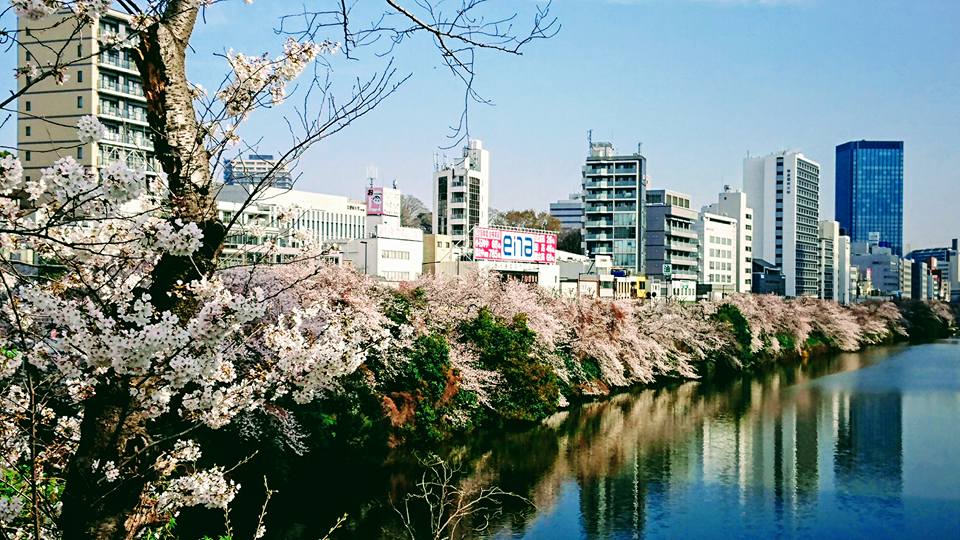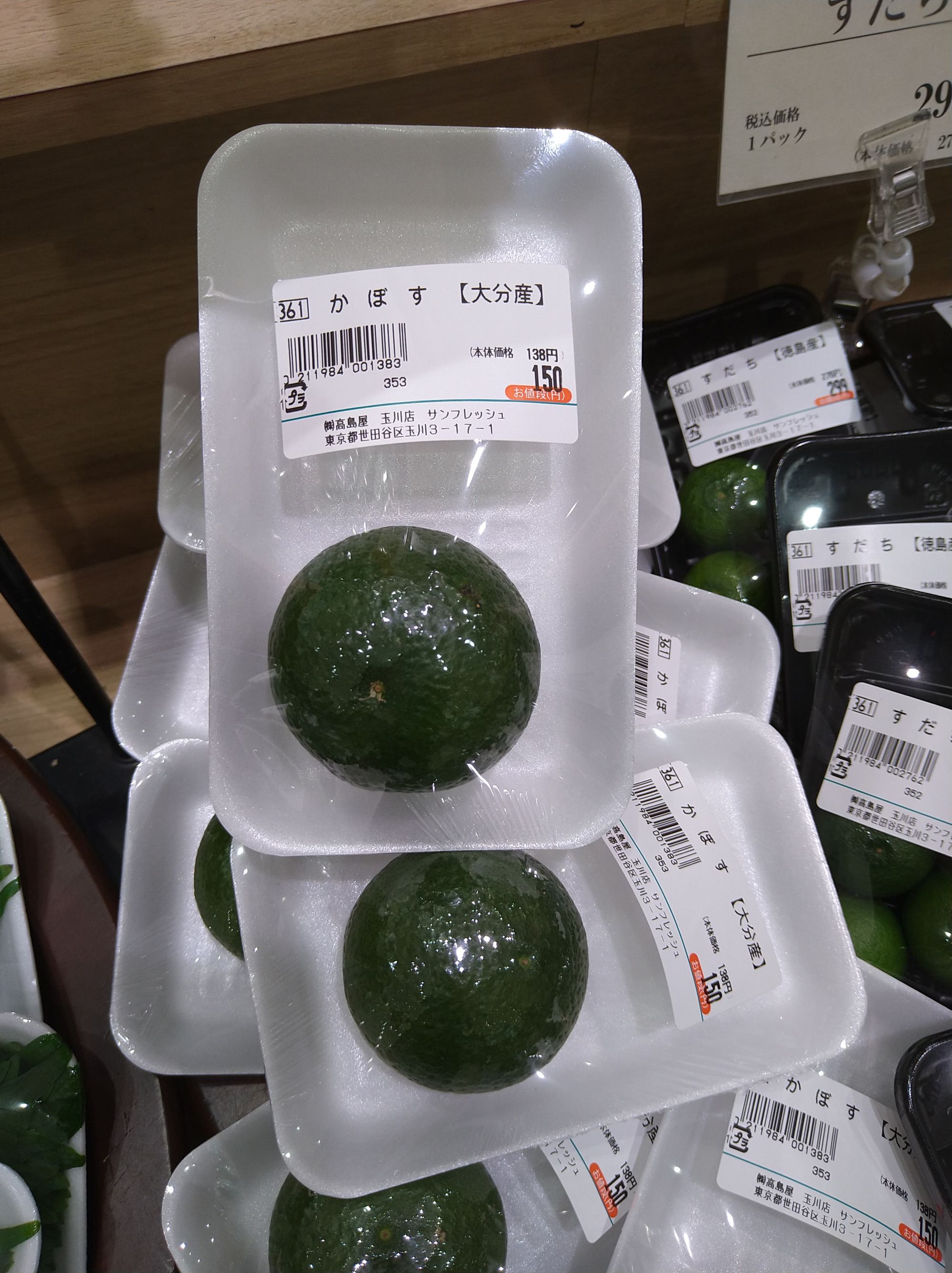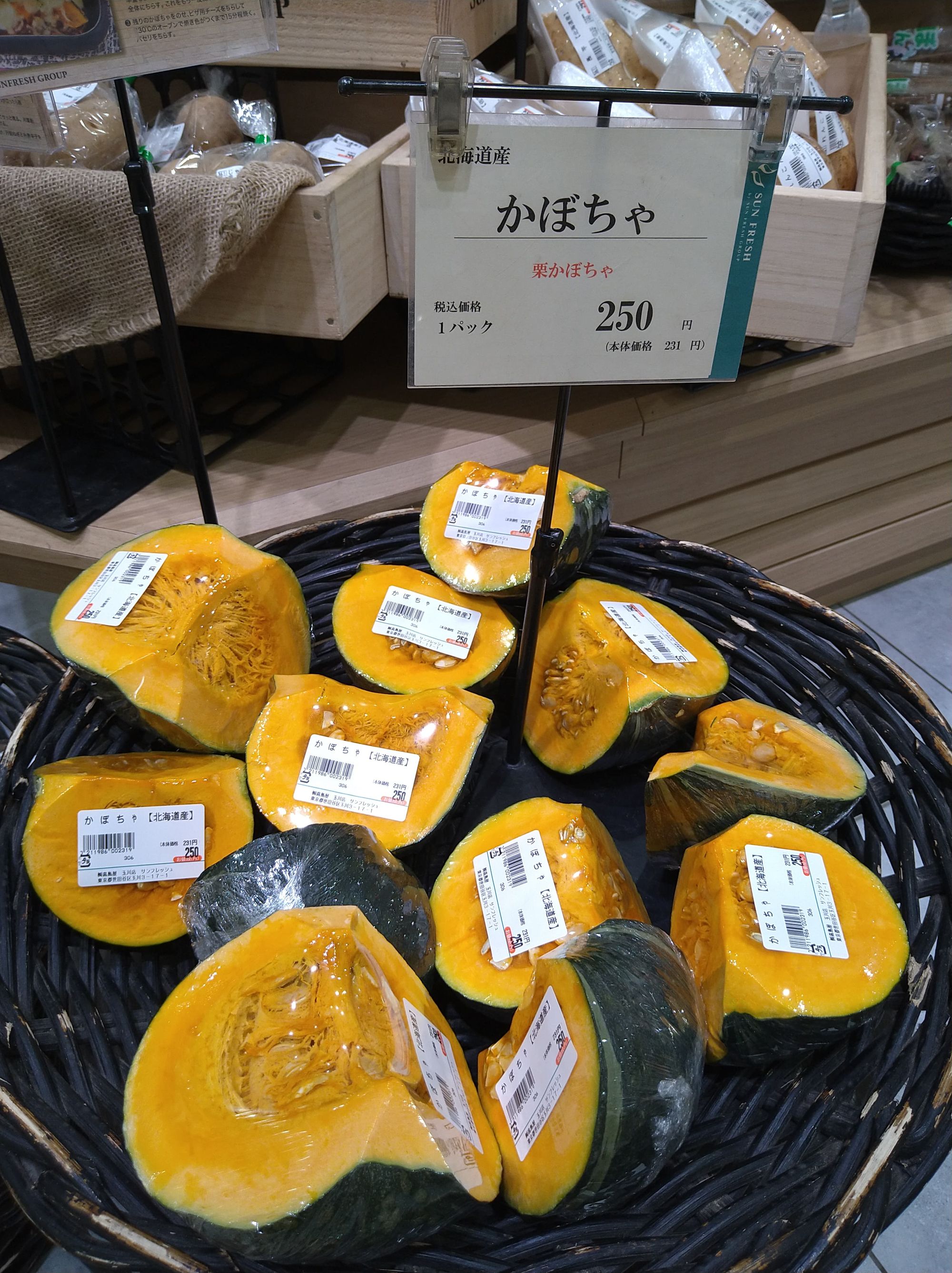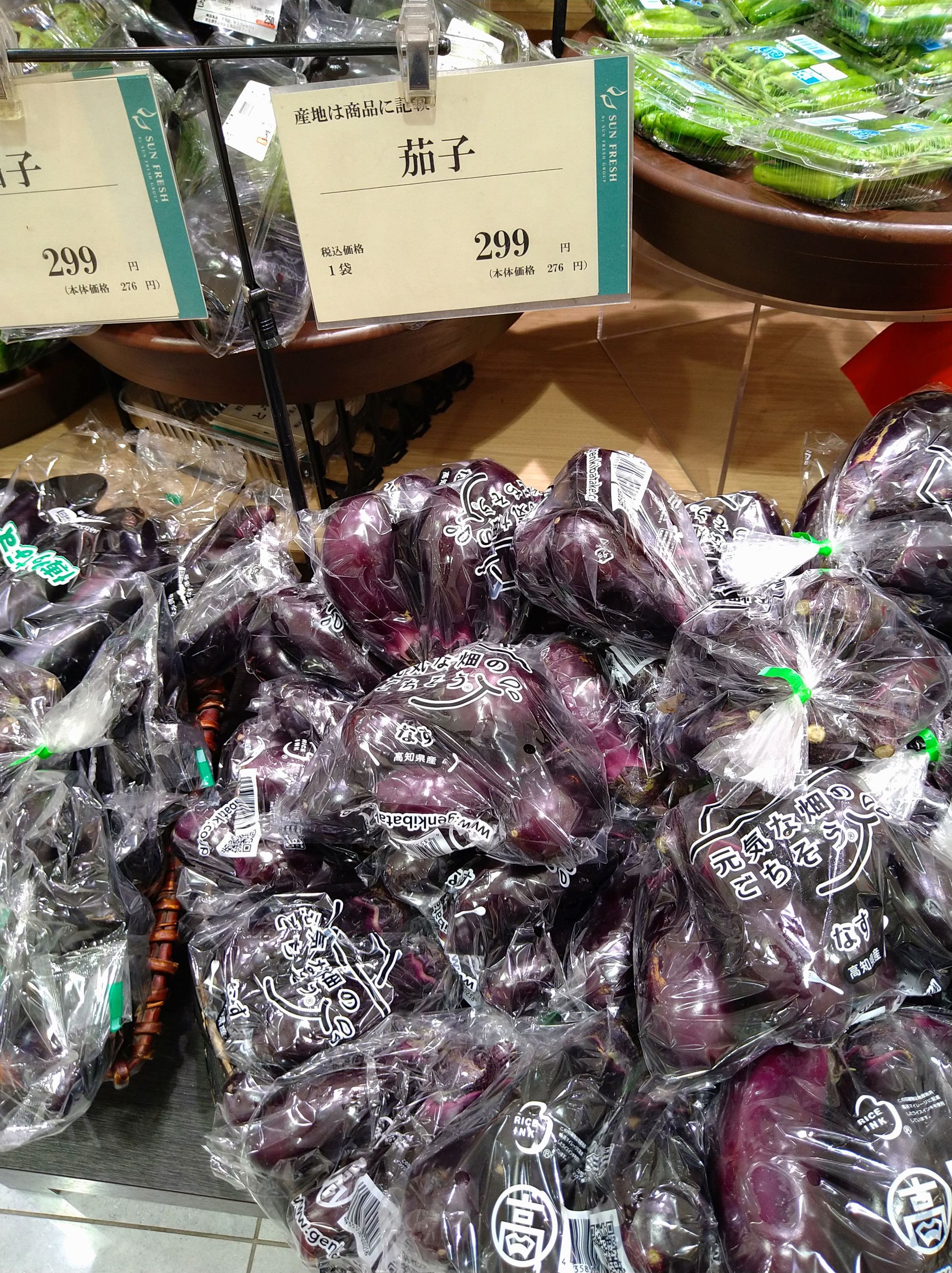It's the season to be wrapping! The mystery of the plastic wrapping
I believe it is time to talk about one of the biggest mystery of Japan, why does Japan wrap everything in plastic? I bet everyone has seen the pictures of single pieces of food being wrapped in plastic. Like a single citrus fruit for example. But why?

I believe it is time to talk about one of the biggest mystery of Japan, why does Japan wrap everything in plastic? I bet everyone has seen the pictures of single pieces of food being wrapped in plastic. Like a single citrus fruit for example. But why?

Before I go through the reasons why the Japanese do this, I should talk about Furoshiki and the Japanese culture of wrapping. Furoshiki originally started as being known as Tsutsumi which translate to package as it was being used to package and protect precious objects. But it went from Tsutsumi (package) to furoshiki (bath spread) when it's purpose changed to being a cloth to wrap your clothes in for when you go to a bathhouse/sento. A key part of the cloth was the patterns that are painted onto them. Traditionally they would have family crests and emblems as an indication of who owned which specific furoshiki.
As bathhouses were a key place in Japanese society, furoshiki became quite popular with all members of society, and as the use of furoshiki increased, their usages increased too. Furoshiki nowadays are used to wrap things like bento boxes and gifts. Now instead of filling the blog with instructions on how to fold a furoshiki, here is a link to a youtube video of 4 ways to wrap a furoshiki:
Unfortunately the use of furoshiki nowadays as reduced massively to the point that I only see them at festivals as a part of people's kimonos or as tourist merchandise. This means plastic and paper wrapping has replaced them instead.

So time to have a look at why do the Japanese wrap everything in plastic? Well there are four main reasons why products are packaged so much.
1. Presentation
2. Convenience
3. Hygiene
4. Preservation & Freshness

Want to sell something in Japan? Make it look nice. It is the simple idea of if it looks good, the better it will sell. Presentation is a key thing in Japan, Japanese women try to keep as pale as possible by using umbrella whenever it is sunny, Japanese workers don't take days off and will stay at work as long as possible so it looks like they are hard-working but most of the time, they are actually working slowly. So if a single lemon is perfectly shaped and looks amazing, then it could be sold for a high price. If you don't believe me, then just look at melons in Japan. The most expensive fruit in the world was a pair of Yubari King melons (a type of cantaloupe melon) that was sold for ¥5 million (£35,687) in 2019. For those lucky souls who saw my tweets of draft blogs would have seen I am doing a blog on fruit in Japan so keep your eye out for it.
The reason why these products can fetch a high price is they aren't damaged. Which is why the plastic packaging is convenient as it st0ps the products from falling apart. And the packaging allows for multiple products to be packed together like a pack of aubergine or apples. This also stops people touching products when they're trying to choose so the chance of damages being caused is reduced.

Now the next reason is very valid with COVID-19 being around. By having a plastic wrapping between you and the apples you just picked up, it means it doesn't matter how many people have picked up that exact pack, the apples will be protected from germs that have come from other people. Now, this reason also has something backing it up, the Glico Morinaga case in 1984.
The Glico Morinaga case (or Metropolitan Designated Case 114) is famous in Japan as one of the few cases that haven't been solved. The case got its name from two famous Japanese food companies, Glico is the company that produces Pocky and you might have seen pictures of the Glico running man in Osaka.

Morinaga & co was the first modern candy company in Japan and you can find their logo everywhere on all kinds of food.

It all began with the kidnapping of Katsuhisa Ezaki who was the son of the founder and had recently replaced his father as CEO of Glico Co, on the night of March 18 1984. At around 9:00 pm two masked and armed intruders broke into the Katsuhisa Ezaki house while he was bathing with two of his children. The intruders first came across his wife Mikieko and the third child who they tied up. He was found eventually by the intruders and was taken to a warehouse in Ibaraki city. His family did eventually escaped their bonds and contacted the police but it was too late. The next morning, a ransom demand was made for ¥1 billion (about $4.2 million) and 100 kilograms in gold bullion. Although it was never paid as Katsuhisa Ezaki managed to escape from the warehouse and later that day, had a press conference explaining what had happened.
But extortion attempts had only just started, from 10th of April onwards, multiple attempts were made. There was a suspected case of arson where several vehicles outside of Glico's HQ were set on fire and then a plastic container containing hydrochloric acid was found inside a Glico building and a threatening letter to Glico was also found which proved it was the same people behind the kidnapping who was doing all things. And then the main threat was made, letters were received by Glico and local Osaka media outlets that claimed that cyanide had been laced into Glico candies by a person/group which went by the name of the Monster with 21 Faces. Now as you can guess, this lead to mass panic and Glico ended up pulling an estimated $21 million worth of products which did a lot of damage to the company but the odd thing was no poisoned candies were found.
Now the Japanese police did not stop trying to crack this case but neither did the letters. Many letters were sent to the media and were based along the lines of mocking police by describing them as stupid and incompetent. And the Monster with 21 Faces also started to give out hints about the things they had done. Now, this case got an odd turn on June 26th when they sent a letter saying:
"The president of Glico has already gone around with his head hanging down long enough. We would like to forgive him. Japan has gotten terribly hot and humid. So when our 'work' is done, we want to go to Europe - Geneva, Paris, London - we'll be in one of those places... Let's bring Pocky - the traveler's friend! Delicious Glico products - we're eating them too! See you in January of next year!"
Let me point out, Glico had done nothing, no ransom was paid. So the monster had finished their work? No! They had actually just turned their focus to other Japanese brands, Morinaga, Marudai Ham and House Foods Corporation. A ransom was made to Marudai Ham for peace and they were ready but they also had a plan. Instead of Marudai employee delivering the payment, an undercover investigator went to deliver the payment. This ended up with what seemed to be the first break in the case as the investigator was followed by an individual that would be later known as "The Fox-Eyed Man". The police had a face to the name but it didn't help in the end. In early October 1984, another letter was sent to the media saying:
"To moms throughout Japan: In Autumn, when appetites are strong, sweets are really delicious. When you think sweets - no matter what you say - it's Morinaga. We've added some special flavor. The flavor of potassium cyanide is a little bitter. It won't cause tooth decay, so buy the sweets for your kids. We've attached a notice on these bitter sweets that they contain poison. We've put twenty boxes in stores from Hakata to Tokyo."
So just like the Glico incident, mass panic occurred and products were recalled but this time, the monster told the truth. Several packs of Morinaga products were found with the label "Danger: contains poison. You'll die if you eat this. The monster with 21 faces." And when the products were tested, they were found to contain 0.2 grams of sodium cyanide. By Valentine's Day 1985, more laced products were being found but the police thought they had found the "The Fox-Eyed Man". They ended up arresting a man by the name of Manabu Miyazaki who was said to have been an outlaw who had ties with the local Yakuza but this led nowhere as Manabu Miyazaki denied the allegations and even had an alibi.
The end of the case
But this case does have an end to it. Eventually, it got too much, and On August 7th, 1985, superintendent Shoji Yamamoto doused himself in kerosene in his backyard out of shame before lighting himself on fire and ultimately passed away. It was only a few days later that this case would be left unsolved as on August 12th, 1985, the Monster With 21 Faces sent their last letter to the media which said. "No-career Yamamoto died like a man. So we decided to give our condolences. We decided to forget about torturing food-making companies. If anyone blackmails any of the food-making companies, it's not us but someone copying us. We are bad guys. That means we've got more to do other than bullying companies. It's fun to lead a bad man's life. Monster with 21 Faces."
A lot of people argue that this is a reason why Japanese plastic wrap everything so it would be clear if someone has messed with a product or not. But let's go onto the last reason which is preservation and freshness as if you have ever had a box of Japanese snacks, you will know that there are individual packages of each piece of chocolate, cookies or crackers in the box. So when you open the box, they stay clean, fresh for longer not exposed to moisture and air. It also means you can share them with friends.
The problem
Now using so much plastic has a lot of problems. In 2017, 9 million metric tonnes of waste was produced by Japan. And most of the waste they generate now is shipped to other countries because they don't have enough land to store the waste. Unfortunately, these other countries like Vietnam don't store the waste correctly and therefore a lot of the waste goes into the ocean!
The solution
Luckily there are changes being made, for example, Sumitomo Riko Co. Ltd a rubber manufacturer which is in the Sumitomo Corporation, made the decision to abolish sales of PET bottled beverages within the company from the middle of February 2020, to improve their own environmental initiatives and raise their employee awareness of the current global situation. Now they only average about 10,000 bottles a year accumulated at the global headquarters. But it is better than nothing.
And they aren't the only company looking to help the plastic issue, Nestlé has been replacing their plastic packaging with paper packaging instead. They currently plan to make a total switch to paper packaging by 2025. But this isn't the only way they are trying to help, they also released an Ocean Salt Kit Kat with four package design variations, each one featuring a marine animal and instructions on how to make an origami version from their packages. If you don't think this is cool then boo you!
And on top of that, Nestlé is also donating ¥10 from each package to support the activities of Zero Waste Japan which a non-profit organization which aims to create new models of production and distribution and develop products which support "zero waste living".
Well what about the government? What are they doing? Well knowing a decent amount about inside workings of Japanese companies and government agencies, they have been slow to get on the ball, not that long ago, they politely asked stores if they may charge for using plastic bags. It was only until COVID cancelled the Olympics and Japan had some time to think that they went, "we are going to make the 2021 Olympics entirely green". And they already started, as of July 1st, all retailers are charging a small fee for plastic bags. It has hit a small culture bump as most clerks in Japan are used to the service culture of bagging everything for their customer. So there have been some cases where clerks start bagging items on autopilot and then realise they haven't asked the customer if they want a bag. But what do you say for when you don't want a bag? No? Well if you remember my "On a need to know basis! Japanese 101: Essential Phrases" blog post, you might remember I gave a warning with saying no (iie) as it can seem a bit rude as it's like saying a sudden NO! In that situation, I mentioned using Daijoubu instead of iie comes in but in this situation, there is a better phrase "Iranai desu" or "I don't want it" as you might confuse the clerk by saying "Daijoubu" which can also mean "that's okay".
Conclusion:
This blog post took nearly two months to write because I had a bit of break from writing blogs. But I did enjoy doing my research into this topic especially when I came across the Ocean salt KitKats which I plan to buy a pack of them! The other interesting thing was the rabbit hole of "the Monster with 21 faces", now I don't know how many of you watch or know anime. But in 2002, the character of the Laughing Man in Ghost in the Shell: Stand Alone Complex was inspired by the Glico-Morinaga case. But this actually is about cybersecurity as The Laughing Man logo has been co-opted by pop culture in advocacy for the Electronic Frontier Foundation and the loose hacktivist collective Anonymous. I bet you didn't expect that plot twist!!!

So, it is time to say a big thank you to everyone reading this week's blog. In terms of next week, I am going to do a blog on Japan's justice system and some of their laws. I know this might be a bit annoying but here is the link to the google form for my Q&A blog: https://forms.gle/oXEeLHD1XzfY5gkc6 So, until next week, arigatou gozaimasu and sayōnara!
